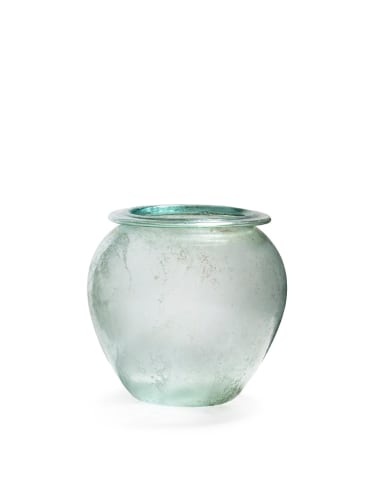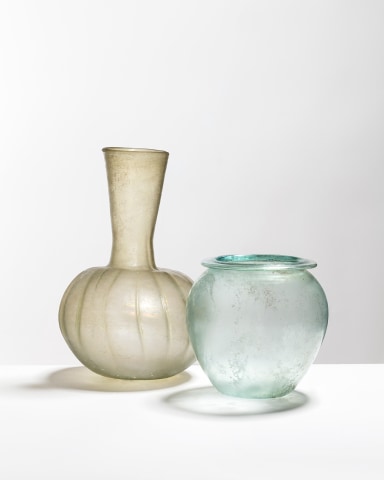38. Gallo-Roman cinerary urn, Late 1st-2nd century AD
%3Cdiv%20class%3D%22title_and_year%22%3E%3Cem%3E38.%20Gallo-Roman%20cinerary%20urn%3C/em%3E%2C%20%3Cspan%20class%3D%22title_and_year_year%22%3ELate%201st-2nd%20century%20AD%3C/span%3E%3C/div%3E%3Cdiv%20class%3D%22medium%22%3EGlass%3C/div%3E%3Cdiv%20class%3D%22dimensions%22%3EHeight%3A%2017.5cm%3C/div%3E%3Cdiv%20class%3D%22price%22%3E%20%3C/div%3E
Free-blown in translucent, light blue-green glass. The large, ovoid body has a slightly pushed-up base, the horizontal lip folded out and under. Intact. Jars such as this were made in...
Free-blown in translucent, light blue-green glass. The large, ovoid body has a slightly pushed-up base, the horizontal lip folded out and under. Intact.
Jars such as this were made in natural-coloured glass and were most prolific during the later first and throughout the second centuries AD. Their production was centred around the Western Empire, in modern day France. They were used as storage jars for household food and goods, and many were then reused as cinerary urns. The lip’s overhang allowed for a piece of cloth to be tied tight over the opening, acting as a lid, and when used as cinerary urns this was replaced with a lead lid.
Provenance
Private collection, France; acquired prior to 1975, thence by descent
Literature
Compare M. Newby and D. Schut, The Fascination of Ancient Glass (Lochem, 1999), no.53



